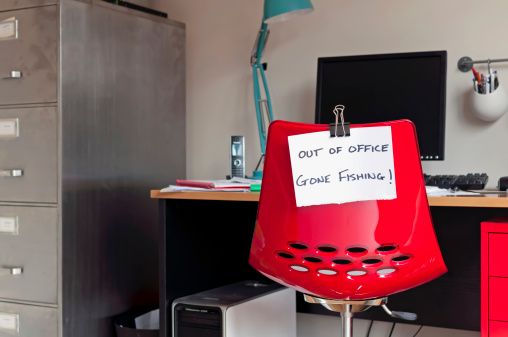 American workplaces could be at a tipping point. For the first time in over a decade, the nation’s citizens are taking significantly more vacation time.
American workplaces could be at a tipping point. For the first time in over a decade, the nation’s citizens are taking significantly more vacation time.
Business leaders, however, are still leaving an out-sized number of vacation days on the table, contributing to a lingering paranoia in the workplace that’s preventing the rank and file from using up their entitlements in full.
The average worker took 16.8 days off last year, up from 16.2 days in 2015, according to a survey of 7,331 individuals commissioned by travel-industry lobby group Project Time Off.
The finding comes as the economy continues to recover from the global financial crisis, lowering unemployment and possibly giving workers more bargaining chips—although wage growth has so far remained relatively subdued.
“The conversation at the top needs to reach further into the company, in addition to leadership modeling good behavior.”
Employers are offering more vacation time, too: in 2016, the average worker earned 22.6 paid vacation days, up from 21.9 the year before.
Many workers, however, remain fearful that appearing less dedicated to work could make them more expendable or obstruct a raise or promotion. Management isn’t doing a very good job at quelling those fears, with 66% of workers saying their company culture with regards to vacations was ambivalent, discouraging or sent mixed messages.
People still left about a week’s worth of holiday entitlements on the table last year, and while vacation days are starting to increase again, they’re still well down on the average 20.3 days taken back in 1978.
According to Project Time-Off, the most influential thing a CEO could do is lead by example. Senior managers were much less likely to use their full entitlements, with 61% leaving vacation time on the table, compared to 52% of non-managers.
“The gap between senior leaders and non-managers demonstrates a communications failure,” the report’s authors said. “The conversation at the top needs to reach further into the company, in addition to leadership modeling good behavior. Without both talk and action, the messages that do reach non-managers will feel like lip service.”
Studies have shown that refreshed employees returning from holidays are less prone to burnout, relationship problems and other health conditions, such as heart disease.
Most executives are at least wise to the risks, with 82% questioned in the survey agreeing that vacations improve health and well-being. Most also accepted that they improve employees’ focus, commitment to their job and willingness to work longer hours when needed.
Of course, CEOs might have more important fish to fry than fretting over their own holiday agenda: like keeping their business competitive in an increasingly disruptive marketplace.
To be sure, one of America’s most disruptive leaders, Netflix CEO Reed Hastings, likes to make it clear to staff he always takes six weeks off each year, so it can be done.

Chief Executive Group exists to improve the performance of U.S. CEOs, senior executives and public-company directors, helping you grow your companies, build your communities and strengthen society. Learn more at chiefexecutivegroup.com.
0

1:00 - 5:00 pm
Over 70% of Executives Surveyed Agree: Many Strategic Planning Efforts Lack Systematic Approach Tips for Enhancing Your Strategic Planning Process
Executives expressed frustration with their current strategic planning process. Issues include:
Steve Rutan and Denise Harrison have put together an afternoon workshop that will provide the tools you need to address these concerns. They have worked with hundreds of executives to develop a systematic approach that will enable your team to make better decisions during strategic planning. Steve and Denise will walk you through exercises for prioritizing your lists and steps that will reset and reinvigorate your process. This will be a hands-on workshop that will enable you to think about your business as you use the tools that are being presented. If you are ready for a Strategic Planning tune-up, select this workshop in your registration form. The additional fee of $695 will be added to your total.

2:00 - 5:00 pm
Female leaders face the same issues all leaders do, but they often face additional challenges too. In this peer session, we will facilitate a discussion of best practices and how to overcome common barriers to help women leaders be more effective within and outside their organizations.
Limited space available.

10:30 - 5:00 pm
General’s Retreat at Hermitage Golf Course
Sponsored by UBS
General’s Retreat, built in 1986 with architect Gary Roger Baird, has been voted the “Best Golf Course in Nashville” and is a “must play” when visiting the Nashville, Tennessee area. With the beautiful setting along the Cumberland River, golfers of all capabilities will thoroughly enjoy the golf, scenery and hospitality.
The golf outing fee includes transportation to and from the hotel, greens/cart fees, use of practice facilities, and boxed lunch. The bus will leave the hotel at 10:30 am for a noon shotgun start and return to the hotel after the cocktail reception following the completion of the round.